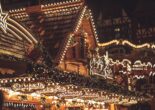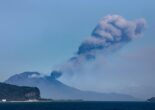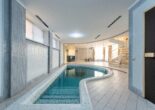Three sisters head to Karuizawa, a popular resort town in Nagano known for its wooden chapels, beautiful fall foliage, and as a Terrace House film location.
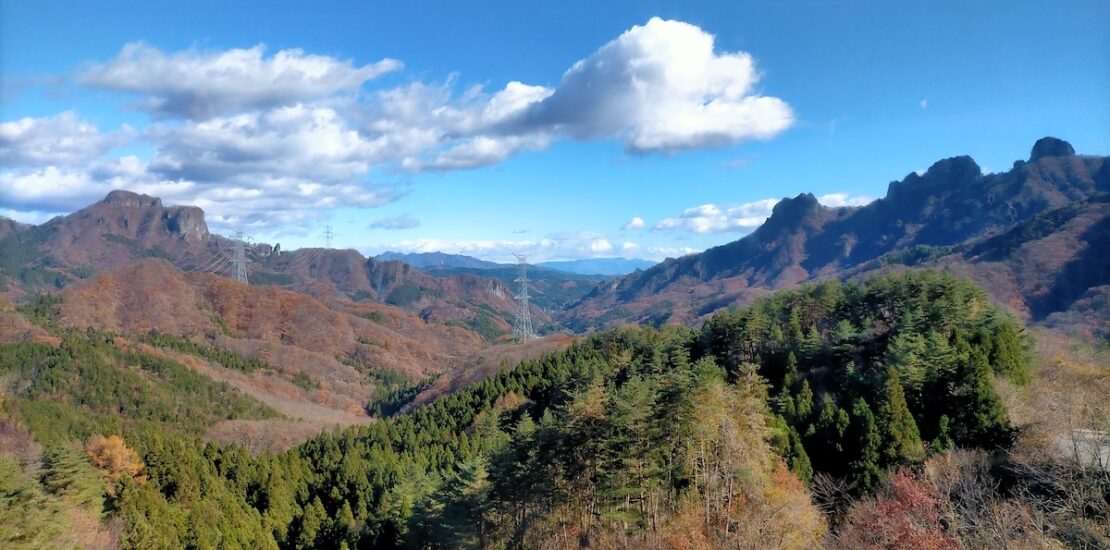
November 2020 had a 3-day holiday, and my two sisters and I decided to take our first trip together outside of Tokyo. Our destination: Karuizawa, which is famous as a summer getaway from Tokyo’s sweltering summers as well as for winter sports. After some minimal planning and a last-minute hostel booking, we caught the Seibu Highway Bus (JP) (西武高速バス) from Ikebukuro Station, which takes about three hours. While slower than the bullet train, it is much more affordable and gives you the chance to stop at “michi no eki,” along the way. Literally “road stations,” these rest areas offer a wide variety of local products and omiyage (souvenirs).
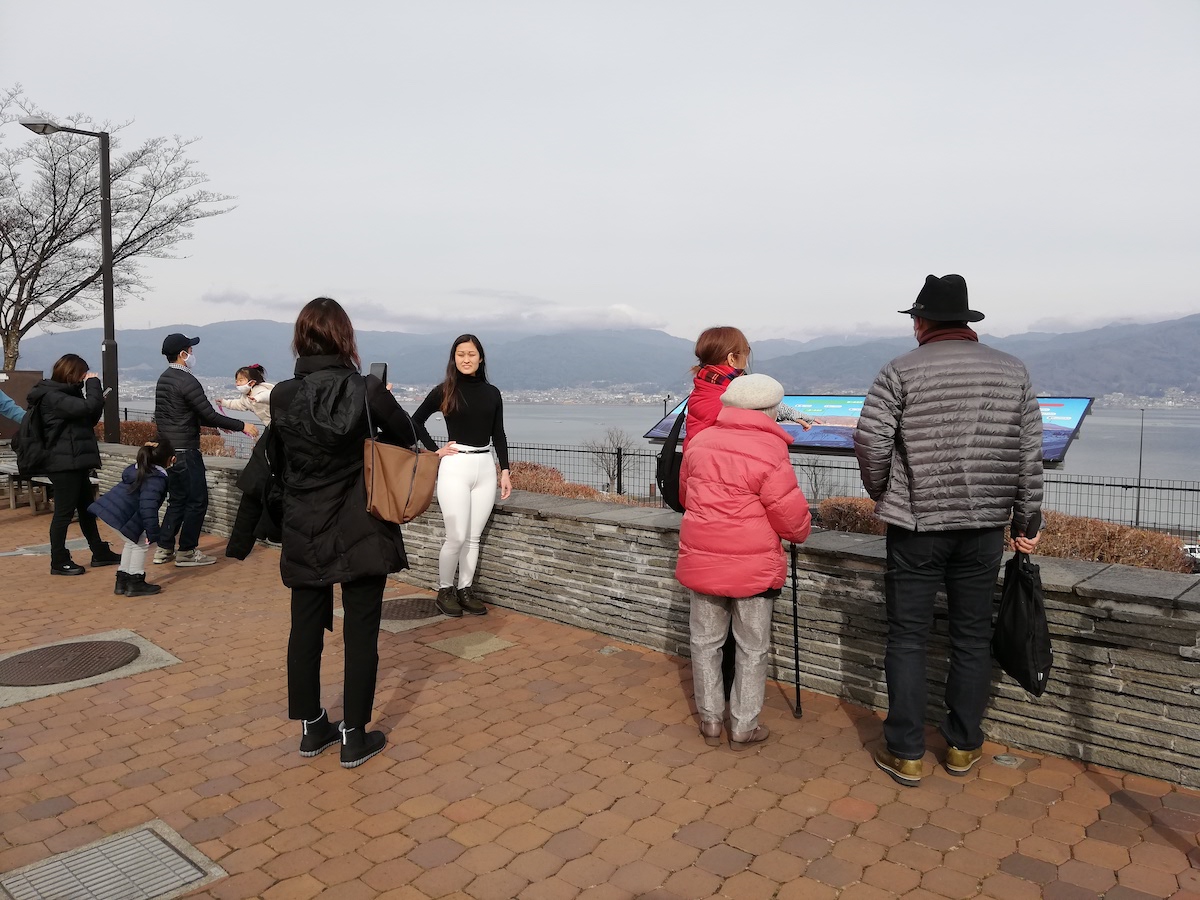
Day One: Arrival
When we left Tokyo, our coats were extra baggage, but as soon as we stepped off the bus at Karuizawa Station, we were glad we brought them. Immediately, the change in weather, the iconic train station we had seen on the reality TV show, Terrace House, and the fresh mountain air filled us with first-day excitement. We headed straight to the Tourist Information Office inside Karuizawa Station for help planning our stay.
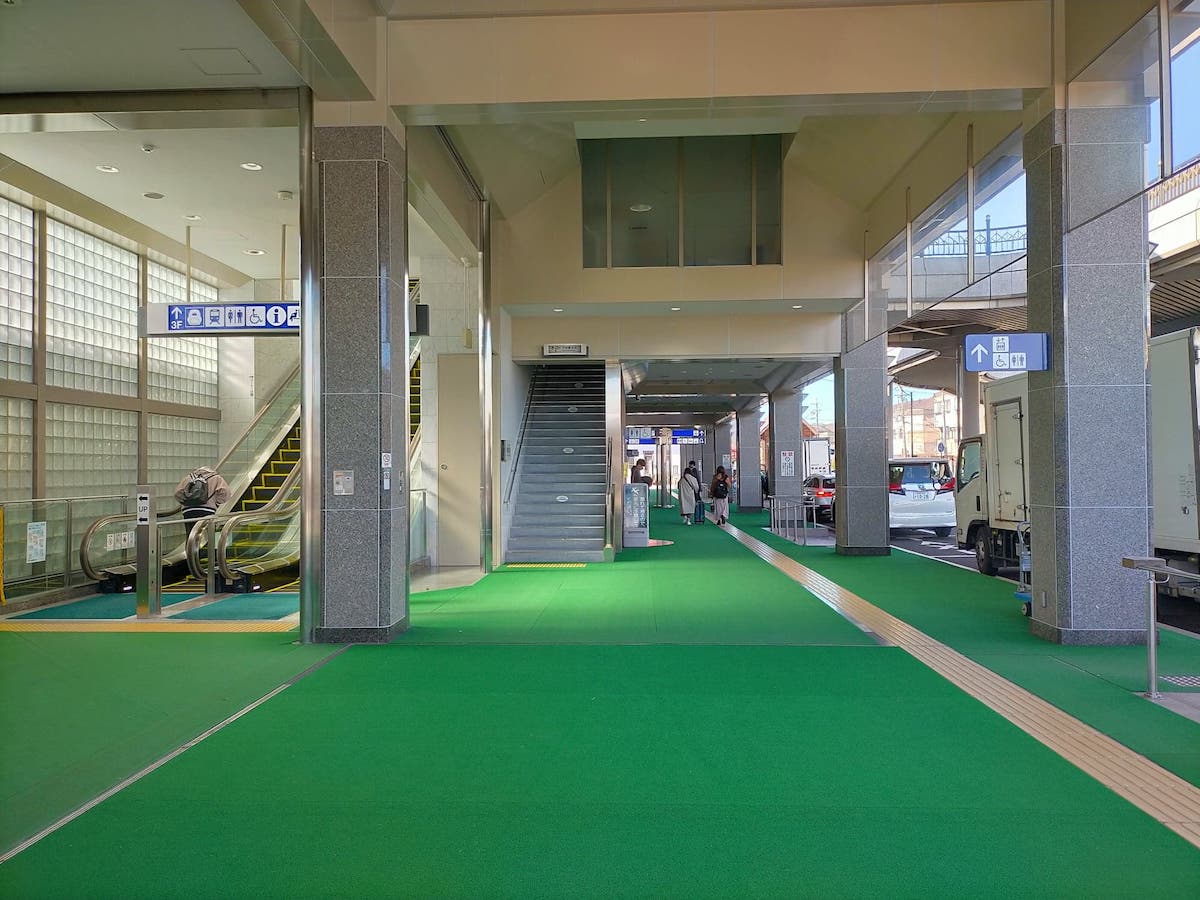
At the office, we were dismayed to learn that, unfortunately, we had missed koyo by a few days. The beautiful red leaves had already fallen! Also, Karuizawa was beginning to close down for the winter. Not only that, when we mentioned our interest in visiting Onioshidashi Volcanic Park and Shiraitono Taki Falls on the same day, the office staff handed us several cryptic timetables, noting that although both sites are about an hour’s bus ride from the station in the same direction, we would need to make two round trips, as the buses are run by different companies.
We weren’t in Tokyo anymore.
Insider Tip: For a visit in the fall, be sure to double-check the koyo forecast! (See last year’s report)
The nearest bus stop to our hostel was 20 minutes from the station and gave us glimpses of the charming country houses, and from the bus stop we had a further 20-minute walk to enjoy the familiar scent of pine needles. Once there, we left our suitcase with the elderly lady at the front desk and made our game plan: taxi back to the station, a short walk to town, a light lunch and some shopping, and an appointment with our friend, a “jin rikisha” 人力車 (better known in English as a rickshaw) puller.
We were in for another shock. The taxi to the station cost us 2,000 yen (we would be shelling out that fare five more times over the course of our trip!), and thanks to a grand detour by Google Maps, our 10-minute walk took over an hour, and we arrived in Kyu Karuizawa lunchless and very late.
Insider Tip: When visiting Karuizawa, location is key! Book in advance so you can stay near the city center, or you will spend a lot of time walking or a lot of money on taxis. Also, triple-check your Google Maps directions.
Our friend was waiting for us on Kyu Karuizawa Ginza Dori 旧軽井沢銀座通り, which is the main and most iconic street running through Kyu Karuizawa. Although the street bears the same name as Tokyo’s high fashion quarter, Karuizawa’s Ginza is a quaint, historic, and quietly charming street that slopes gently upward, hemmed in by specialty jam and honey shops, stores dedicated to furniture, jeans, and embroidered goods, as well as a variety of dining options. Whether you are hungry for French, Italian, Japanese, or for snackie foods like mitarashi dango or ice cream, there are plenty of options to choose from.
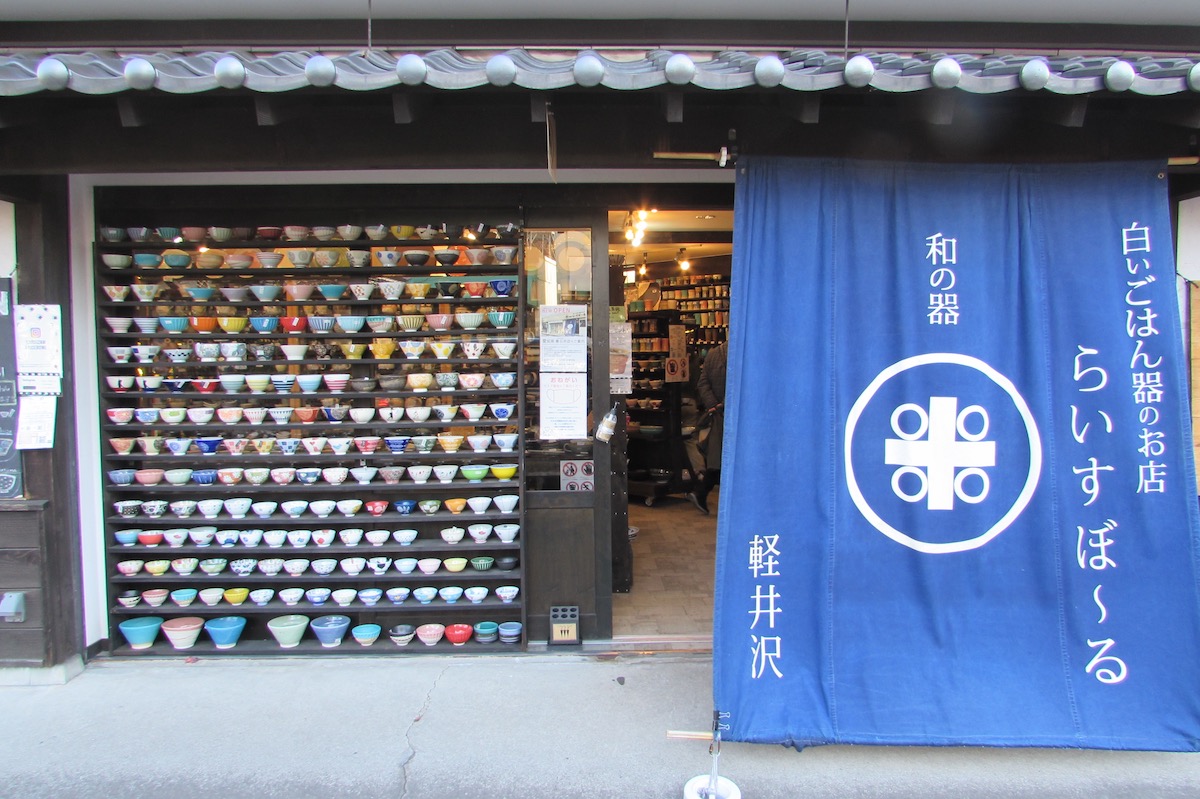
Insider Tip: For boutique shops and sit-down restaurants, visit Church Street shopping mall across from the post office. On the other hand, for brand-name clothing and unbeatable deals, head to Karuizawa Prince Shopping Plaza, located just outside Karuizawa Station’s South Exit.
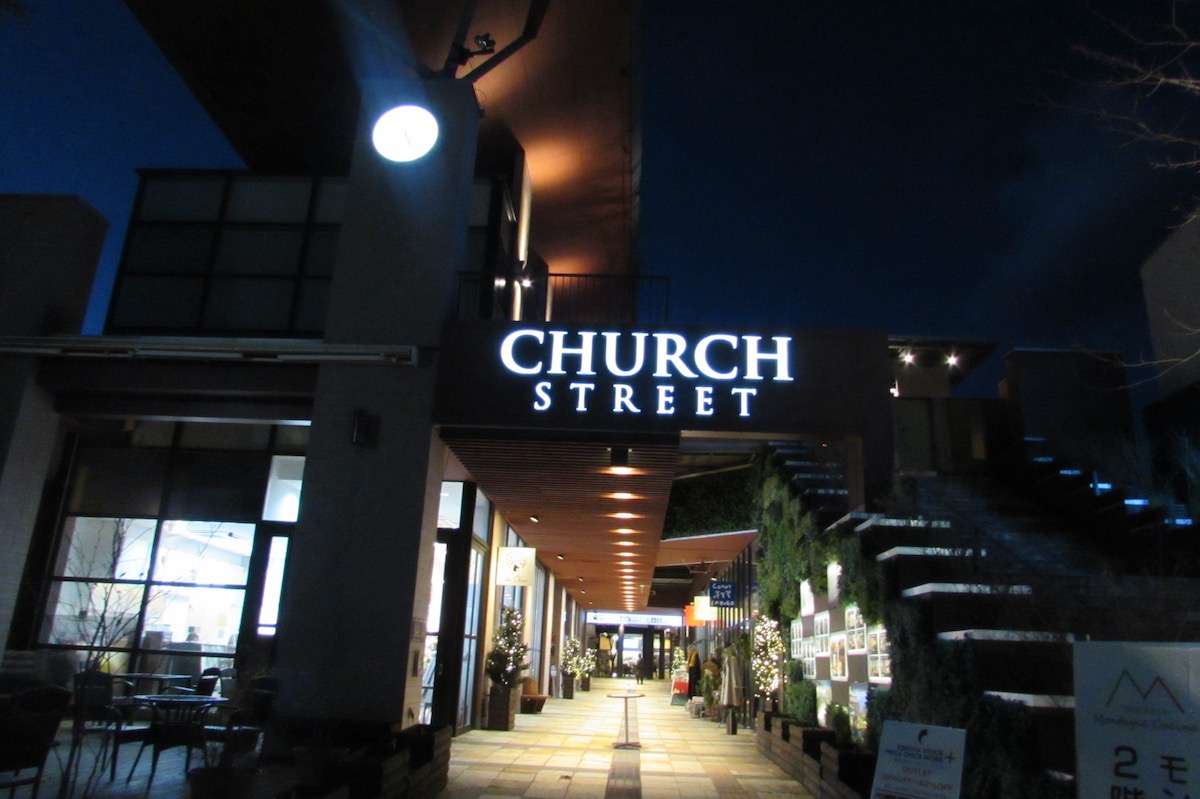
Since only two can ride in one rickshaw, we split up–our friend pulling one rickshaw, and his boss pulling the other. Both of them chatted as they jogged, taking turns telling us the history of the area. They didn’t seem to lose any breath, and when we asked, they said it’s all about leverage. Rickshaw pullers travel around Japan following the tourist season, and these days apparently a lot of them are ladies!
We made a stop at the Karuizawakai Tennis Court 軽井沢会テニスコート, the landmark location where the then Emperor Akihito met and fell in love with future Empress Michiko. He was the first to marry a commoner, and they became the first Imperial couple to raise their children themselves.
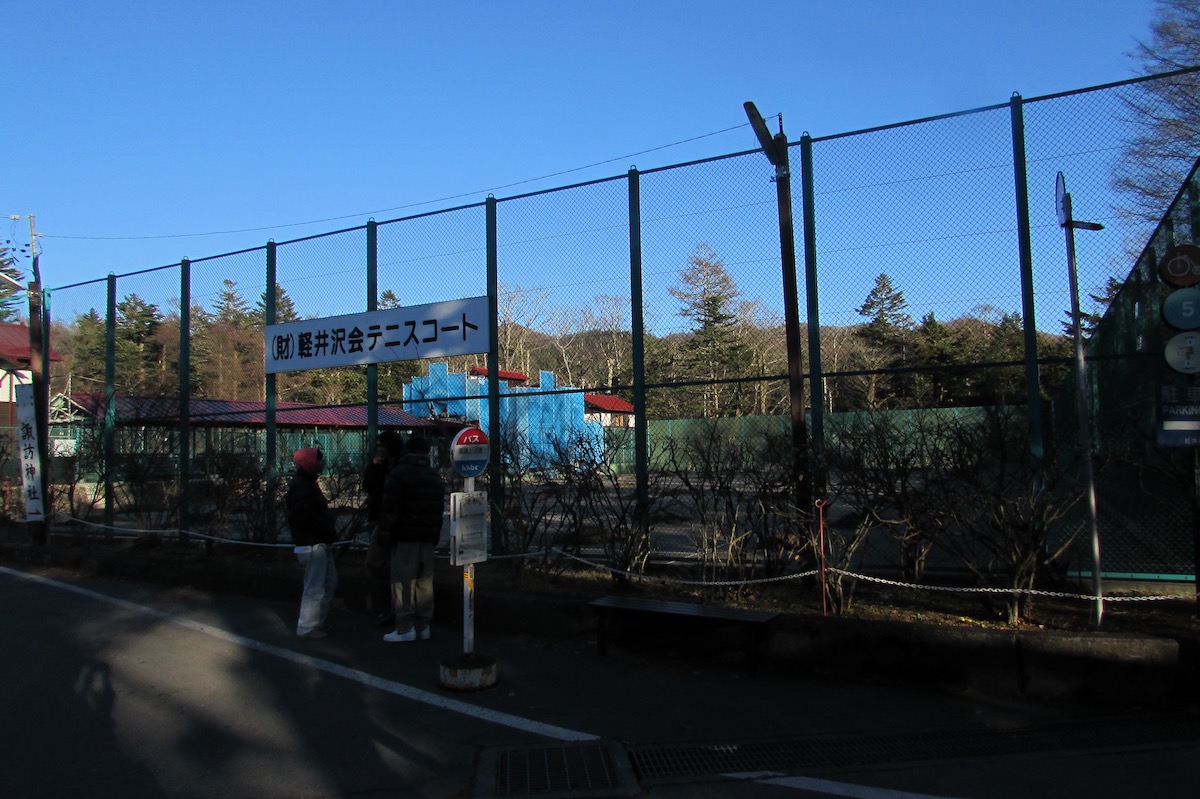
We also stopped by The Shaw Memorial Chapel ショー氏記念礼拝堂, a small wooden building just off Ginza Dori. It is named after Bishop Shaw, who is responsible for bringing long-lasting Christian influence to Karuizawa. In front of the chapel is a bust of Shaw, and behind it is his reconstructed house, which is open to the public.
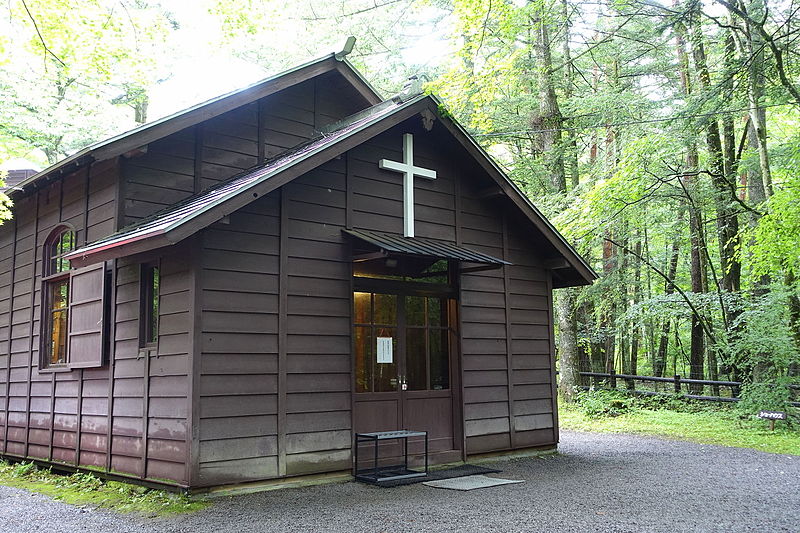
No tour of Karuizawa would be complete without a stop at Mampei Hotel 万平ホテル. Originally called Kameya Hotel, this Western-style hotel is known for its clawfoot bathtubs, homemade Nagano apple pie, and especially for its “royal milk tea.” Beatles’ fans will be delighted to know that this beverage is still prepared according to the recipe John Lennon taught the staff himself during his stay.
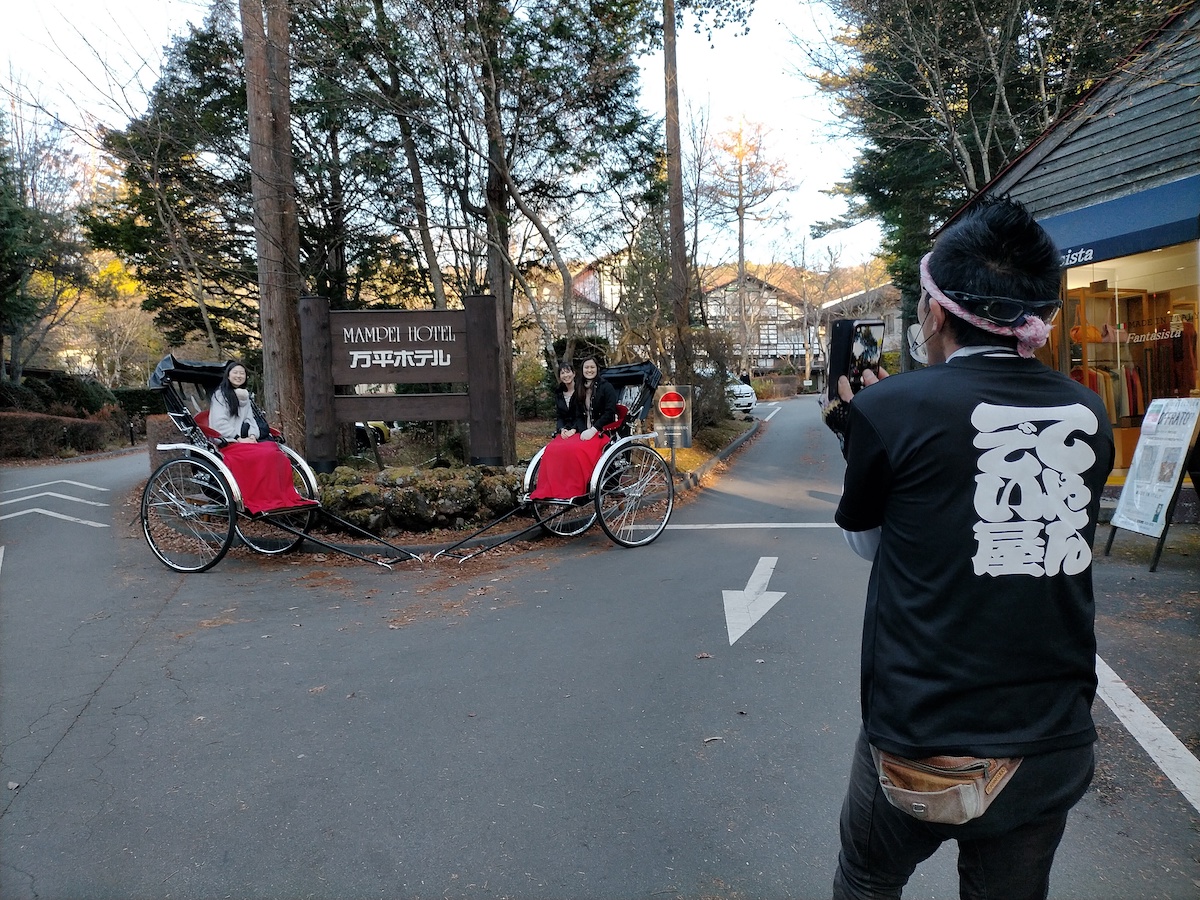
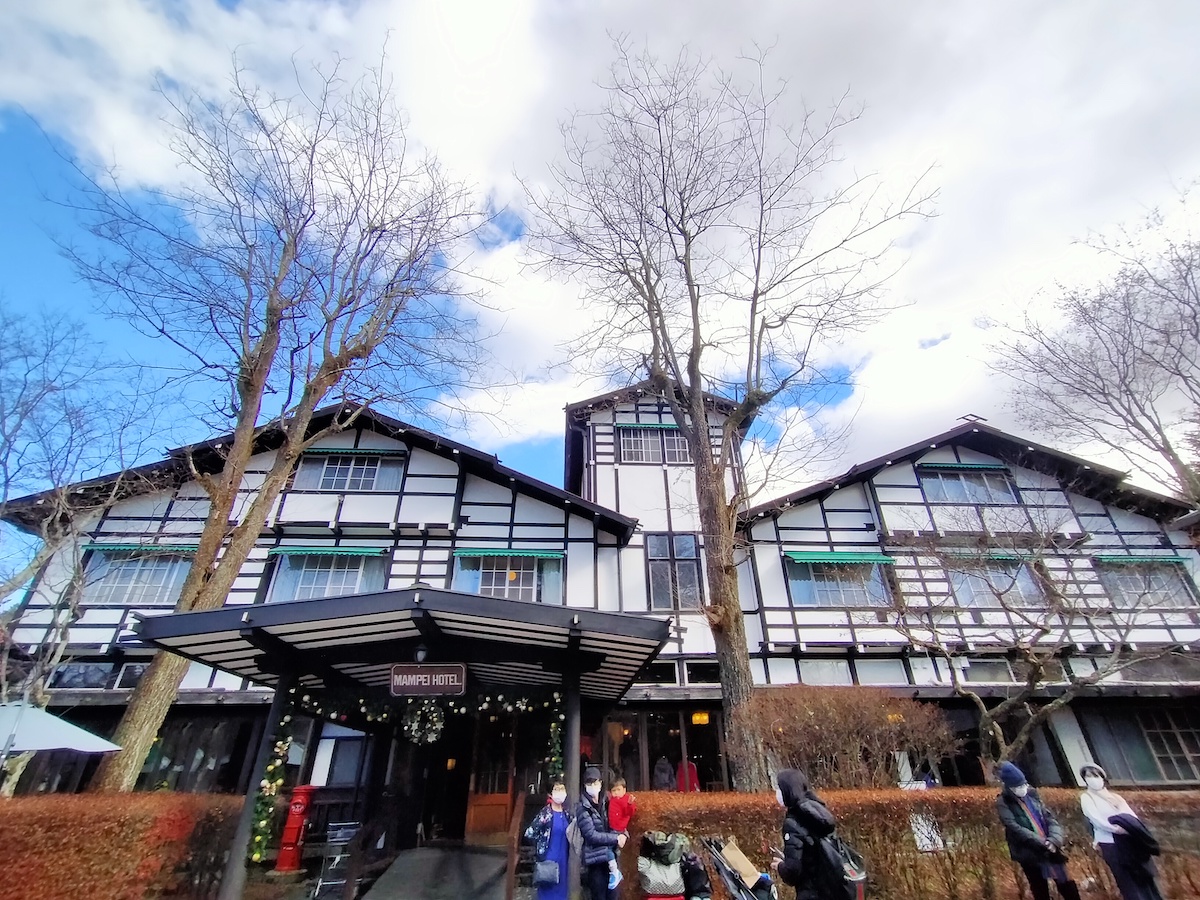
Our ride took us past beautiful vacation homes and through the beautiful larch forests, ending back in front of the Ginza Dori post office, where we thanked our friend and said goodbye. It was getting dark, and it had dropped to about 5 degrees Celsius, so we decided to end the night with a hot meal at Wakadori, a must-see location for Terrace House fans.
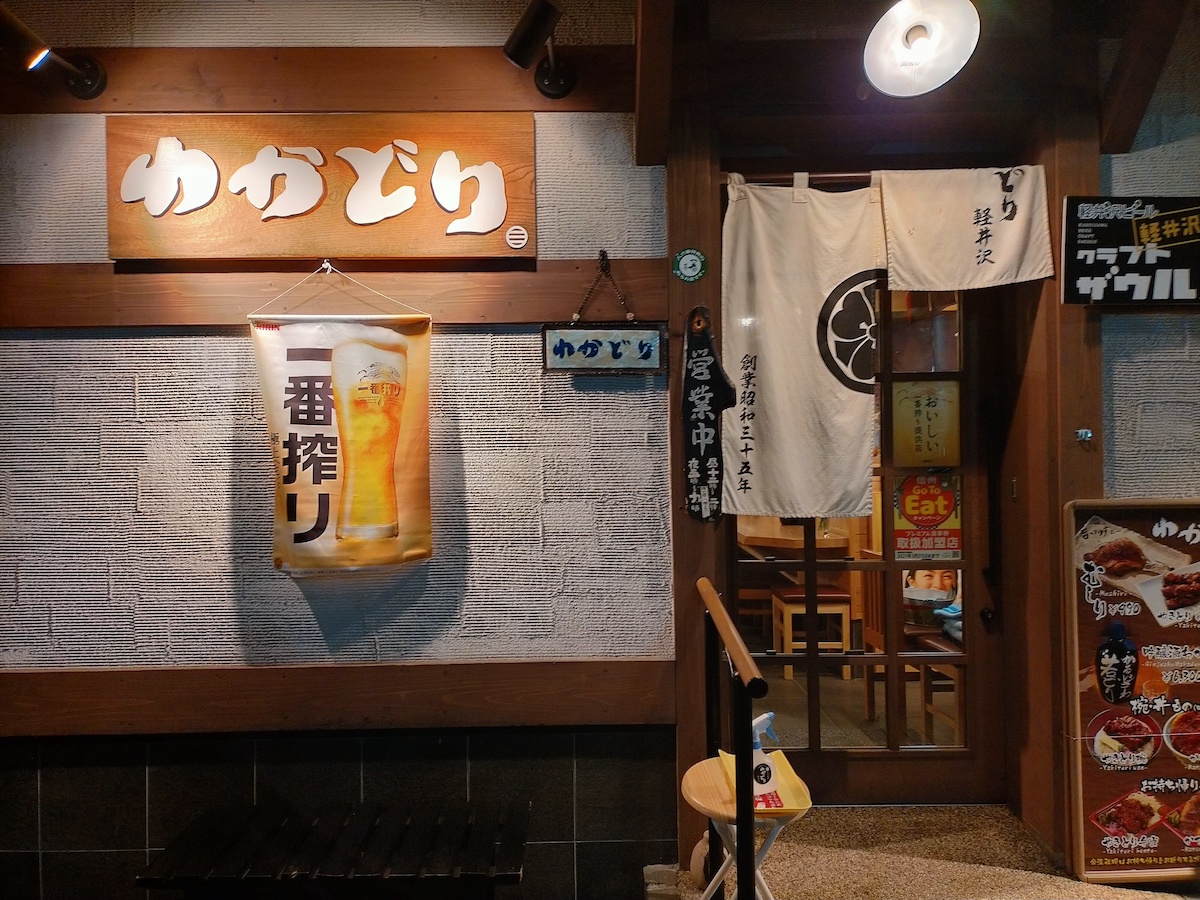
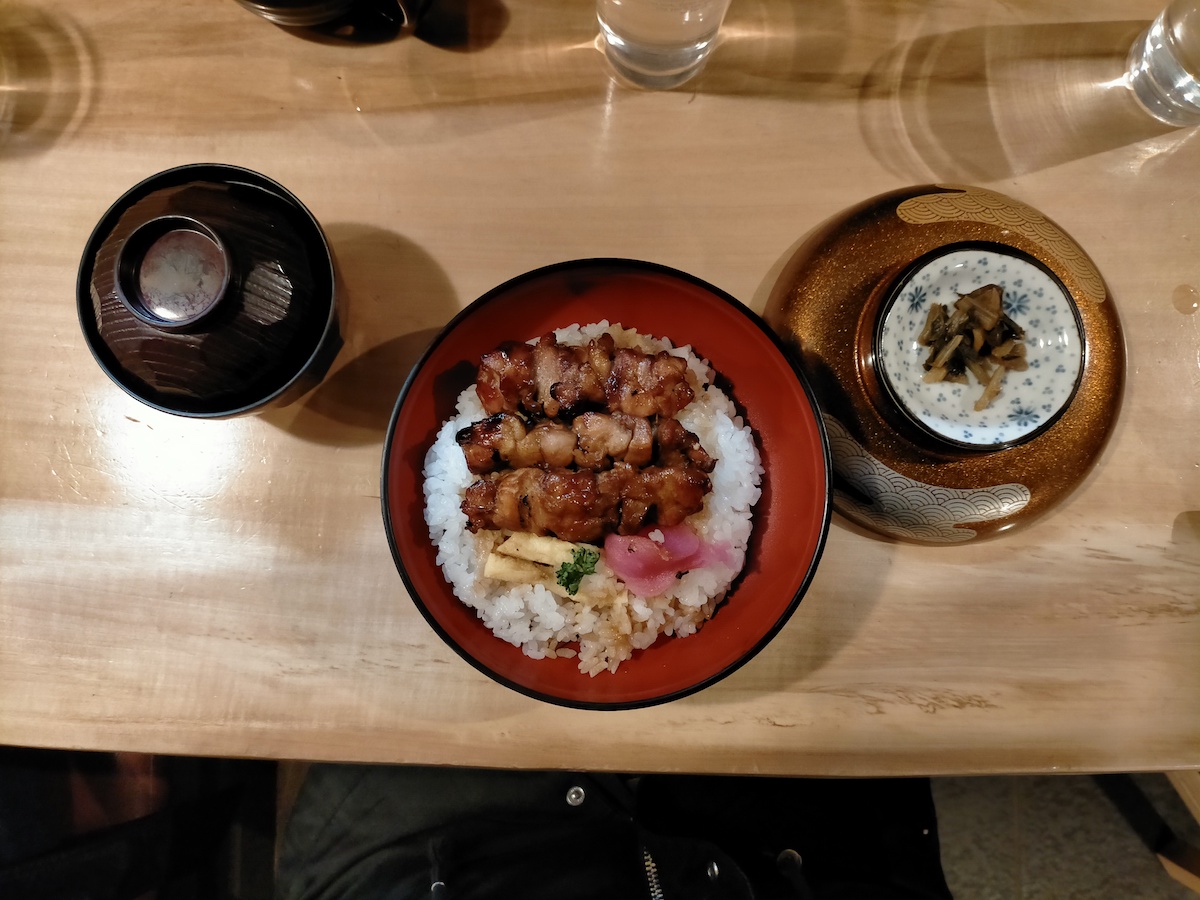
Wakadori わかどり is the yakitori restaurant where Terrace House’s pro skier, Takayuki Nakamura, used to work part-time. We arrived shortly after five and were seated at the only three remaining counter seats. From there, we had a good view of the kitchen and could turn around to see the spot where Ami and Tsubasa sat. Wakadori has a cosy atmosphere and seems to be a popular place for takeout as well as dine-in. No wonder–their famous yakitori was mouth-wateringly tender and juicy!
Insider Tip: There is a taxi station few minutes walk up the street from Wakadori. You can use the old payphone to call for a ride.
See taxi companies and fares here (Japanese site)
Day Two
The next day, Sunday, we decided to take a trip further out. We scrapped our original idea to take the free hostel bicycles into town after we discovered there was a good reason they were free–every one of them had flat tires and rusted frames! Instead, we called another taxi, and from Karuizawa Station, we took a bus up a curving mountain road to the stunning Shiraito No Taki Falls 白糸の滝, not to be confused with Shiraito No Taki Falls near Mt. Fuji.
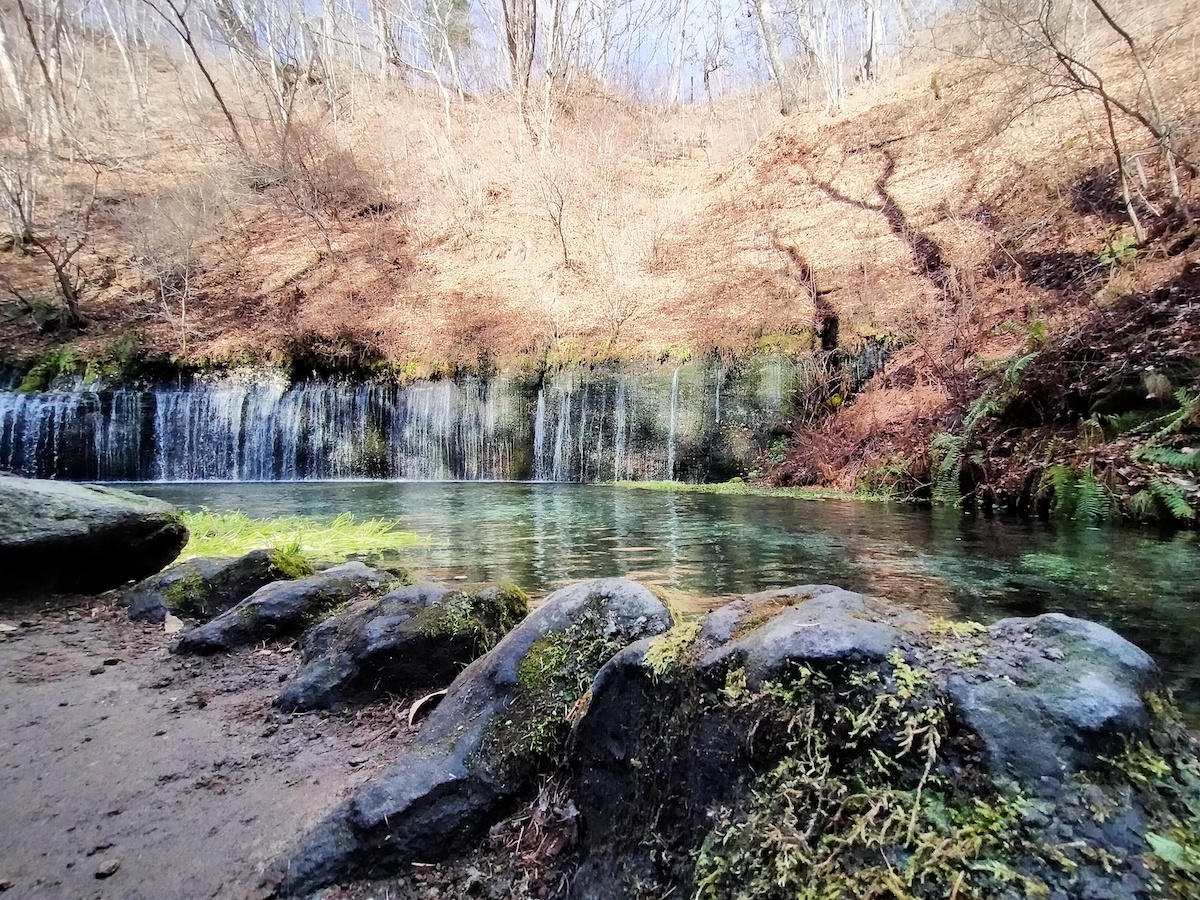
The falls are small but artfully landscaped to create a beautiful panorama of watery threads pouring into a pond, which overflows into a stream. We soaked in the beauty and rejuvenating negative ions for twenty minutes or so, then climbed an incredibly steep staircase up the side of the mountain and got a view of the falls from above. If we had continued following the trial, we would eventually have reached Mine No Chaya (峰の茶屋), the final destination of the Shinanoji Nature Trail (信濃路).
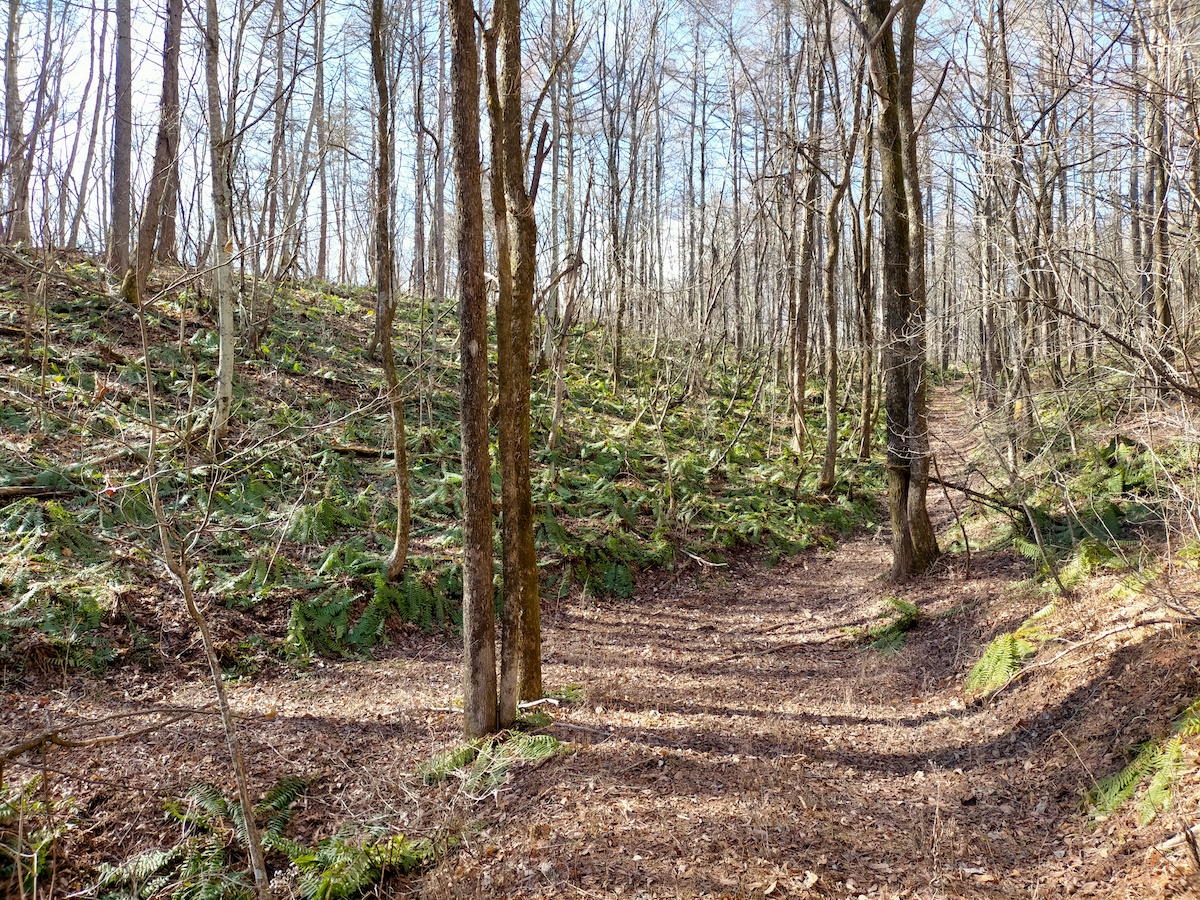
For time’s sake, we turned around, making a pit stop at the souvenir shop for postcards and apple-themed Nagano sweets before catching the bus back to town.
Insider Tip: The return bus is first come first served, so be sure to leave yourself a margin of time before the last one departs for the day.
Next on our schedule was a visit to the Usui Pass Observation Platform 碓氷峠見晴台. Although the Tourist Information Center had told us the Aka Bus 赤バス was not in service during the national holiday weekend, the charming retro vehicle puttered up to the bus stop right on time.
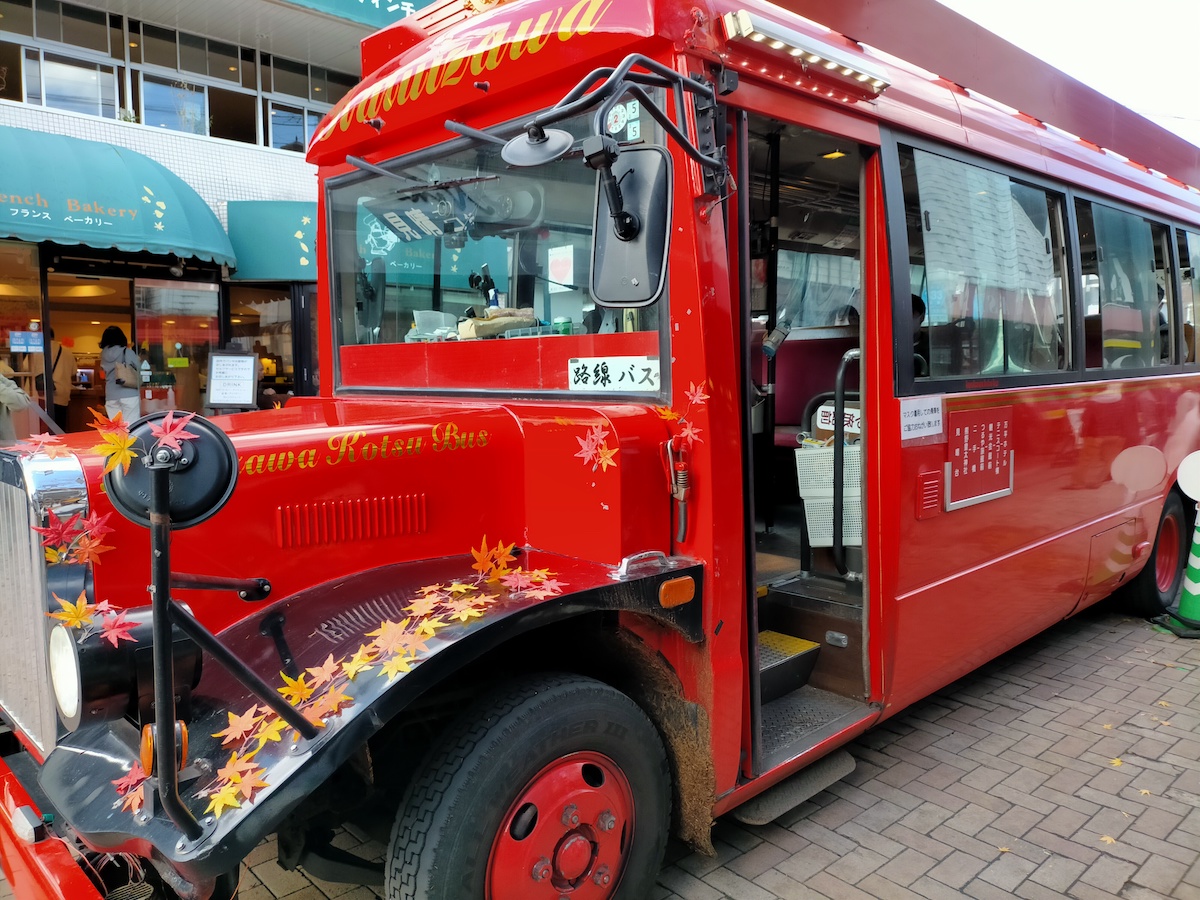
We bought tickets on board and enjoyed a scenic ride up another windy mountain road. The Aka Bus dropped us off at the foot of a steep staircase. Thinking this was the way up to the Observation Platform, we took a tour around the small shrine complex at the top, and then found a bench to eat the osekihan bentos we had picked up in town. The view was nice, and we could see lots of off-duty Red Buses parked below, but it was not quite the landscape we had imagined.
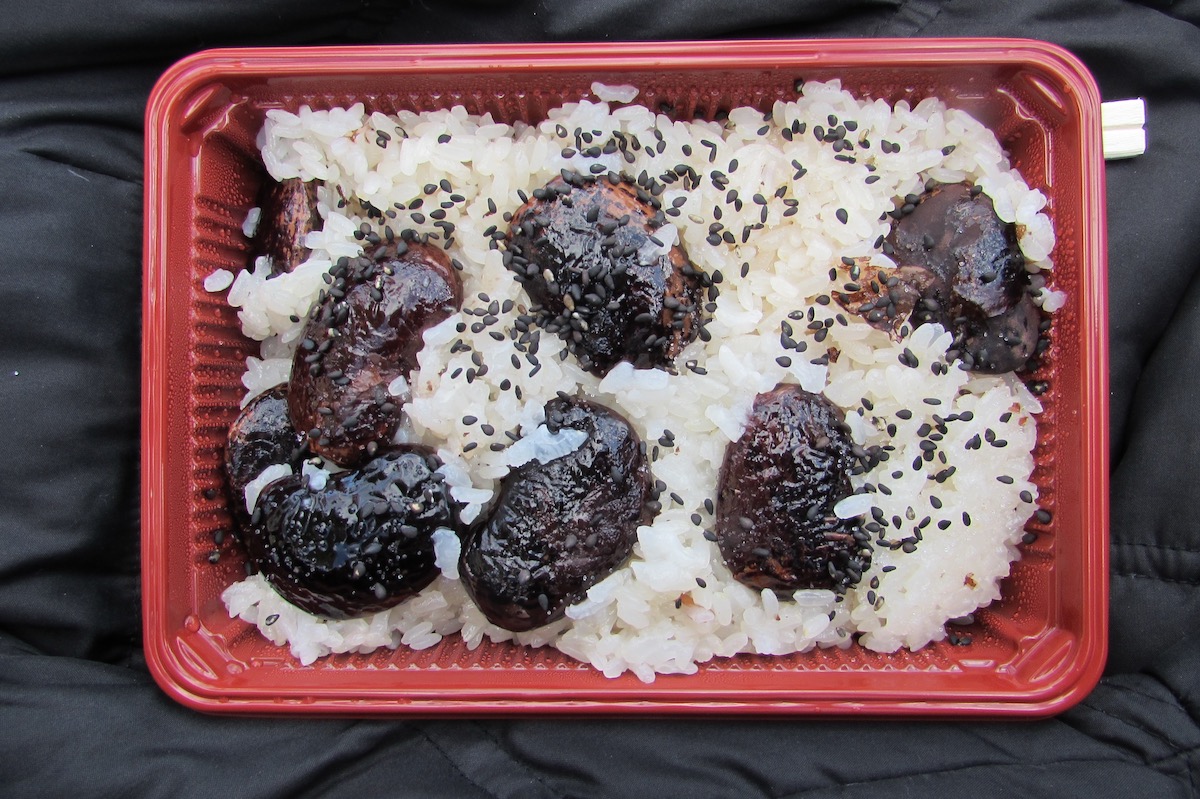
On our way back to the bus stop, we glanced casually at a map of the area, and realized that we had spent our entire lunchtime not at the Usui Pass Observation Platform, but at Kumano Kotai Shrine 熊野皇大神社! The actual observation platform was a few minutes’ walk further down the hill. With minutes to spare before our bus departure time, we dashed down to catch at least a glimpse of the border between Nagano and Gunma Prefectures. This was the view we had been hoping for!
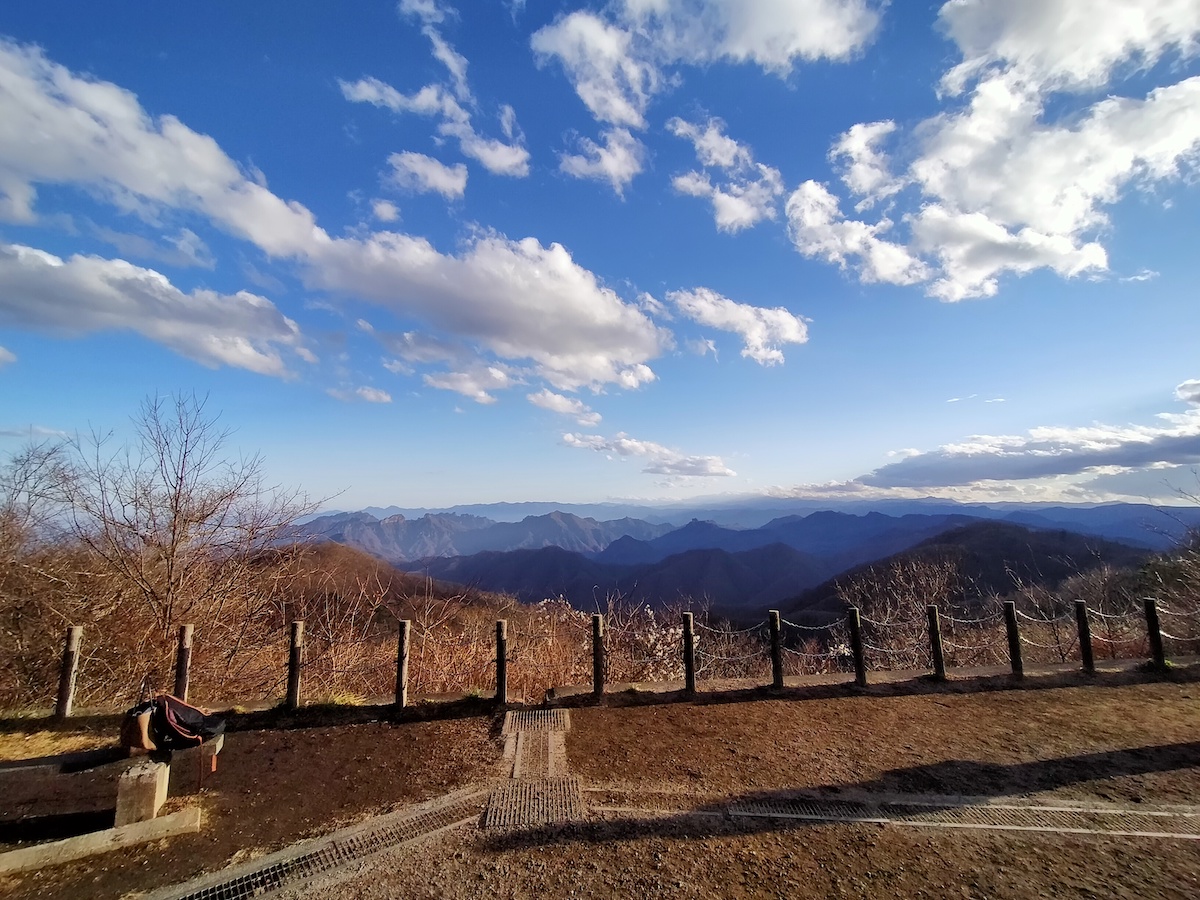
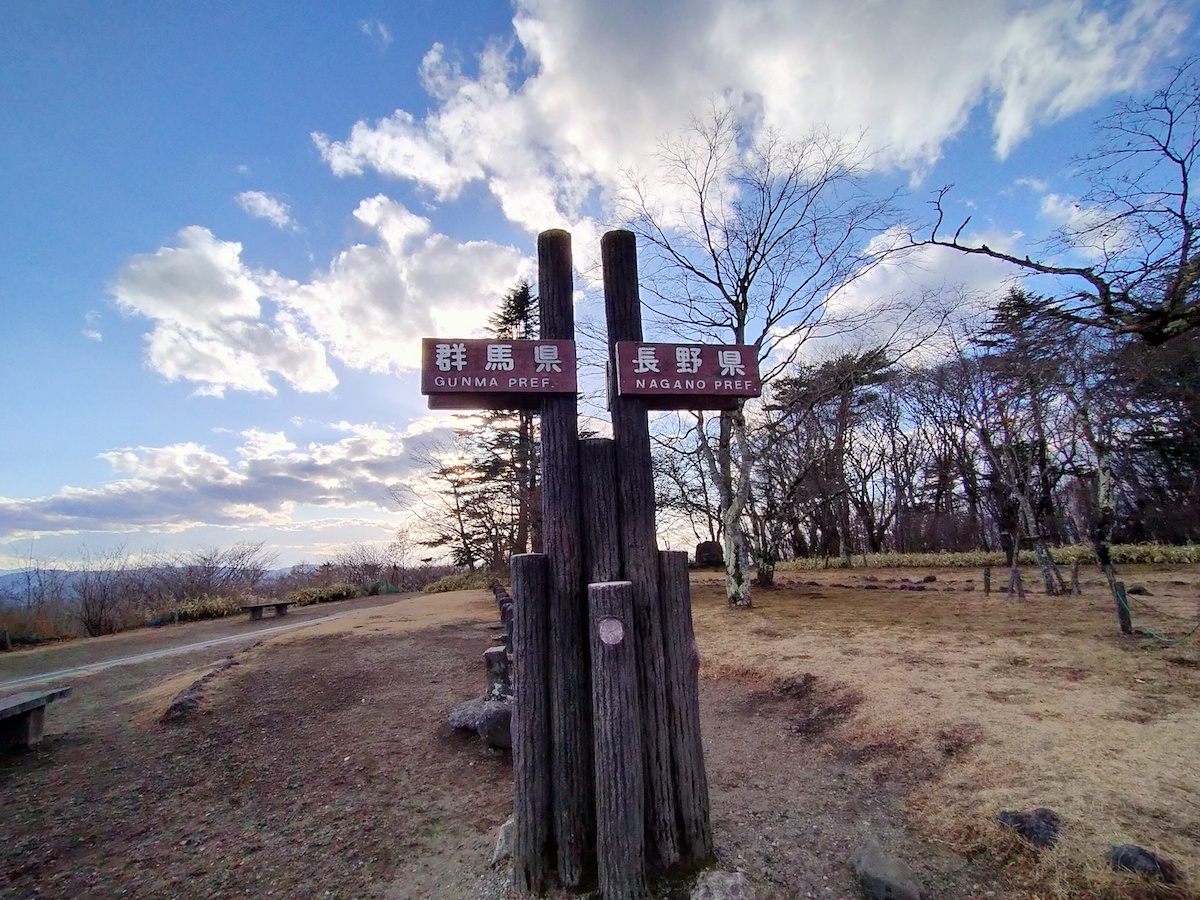
Although we didn’t have time to stop by, Shigenoya しげの屋 is an old restaurant planted right on the border, famous for Nagano soba with “chikara mochi,” a rice cake that ancient travelers ate to fortify themselves for the strenuous hike ahead.
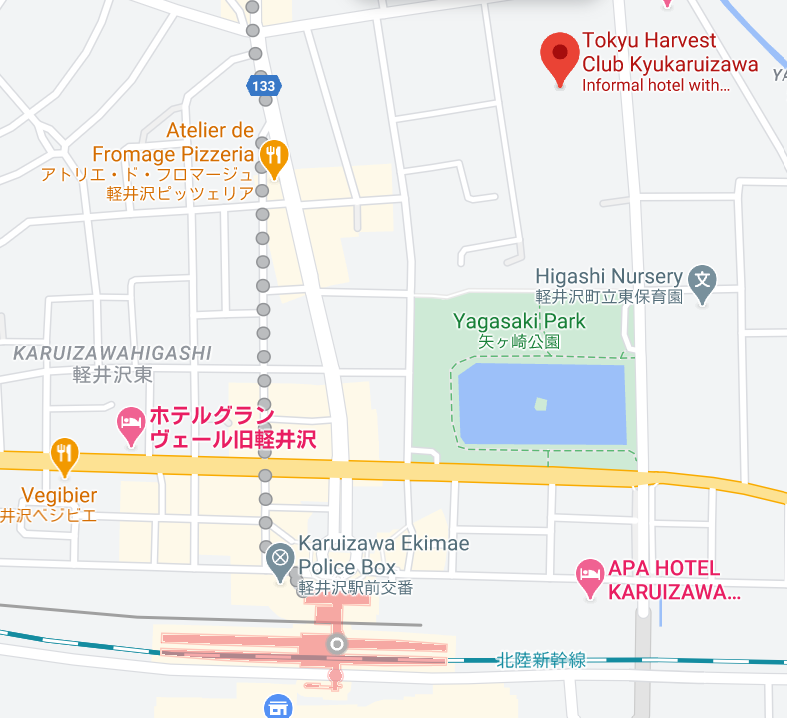
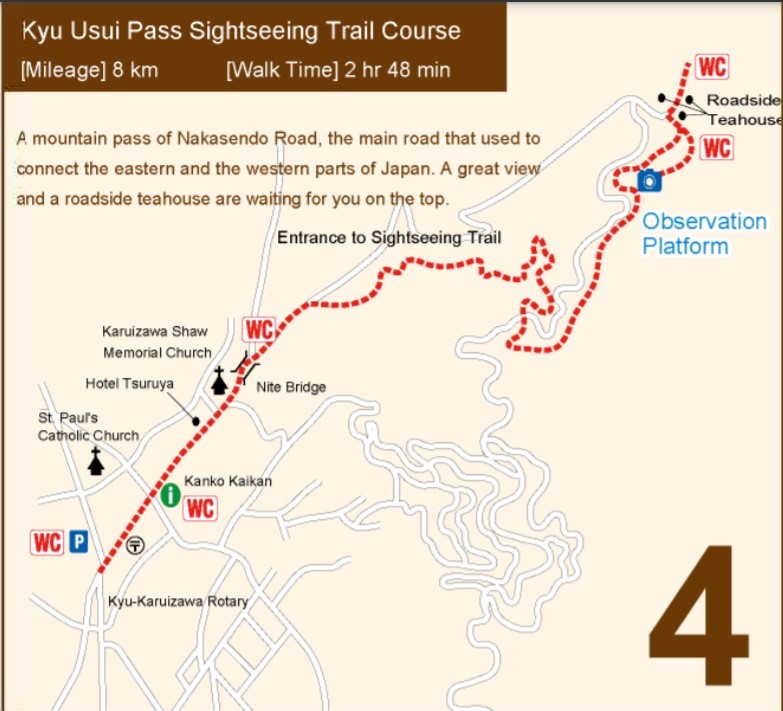
After a bit of shopping on Ginza Dori, we headed on foot to another Terrace House location: Sasa—Japanese Cuisine and Soba restaurant (冴沙), run by pro hockey player Tsubasa’s father, Sato-san. It was a longer, chillier walk than we expected, but we had hot food to motivate us. To our major disappointment, when we arrived we found the parking lot empty and the lights off, except for a little glow from the kitchen. After hanging around long enough to feel like creepers, we were ready to leave, when Sato-san came out of the kitchen and opened the door. He asked us where we were visiting from and where we were staying, invited us back for lunch the next day, and after taking selfies with us, gave us a package of cookies as a thanks for stopping by.
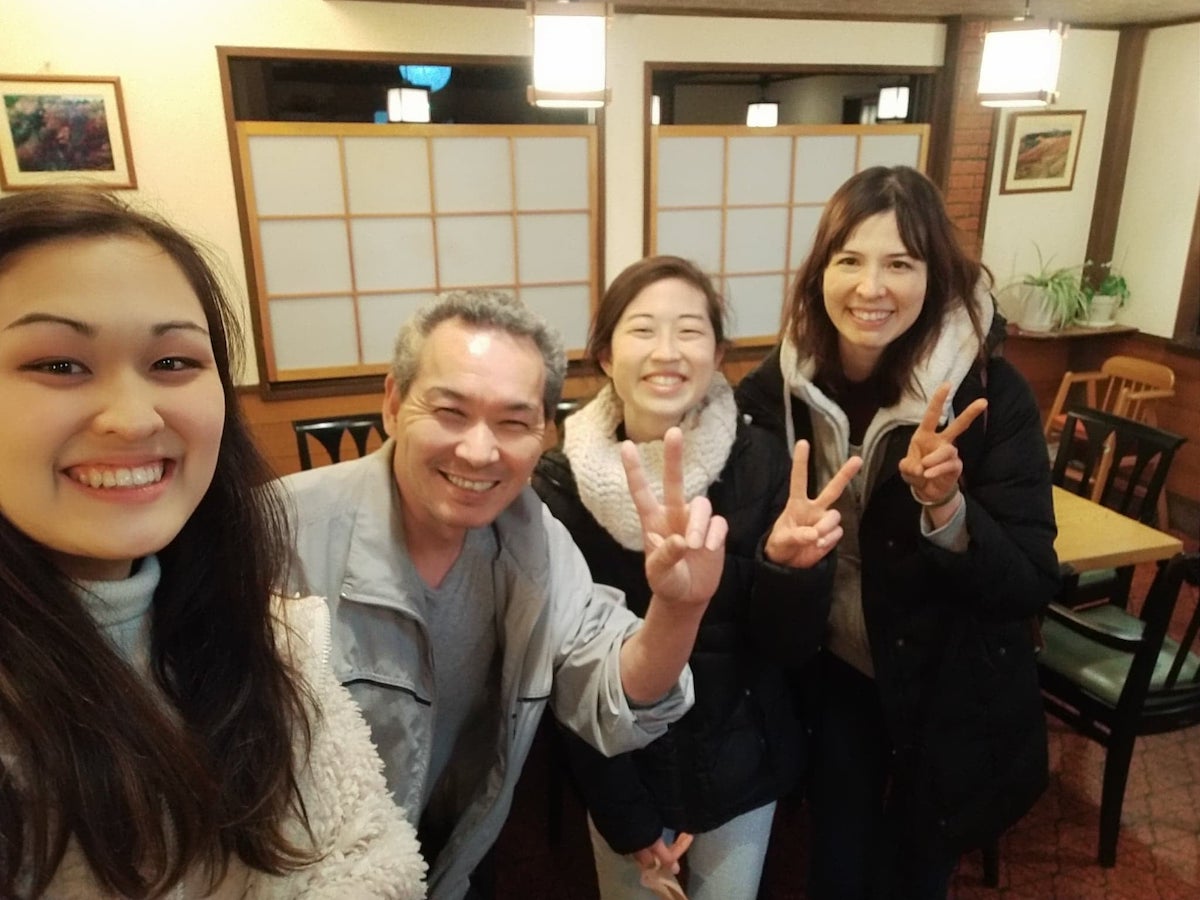
Happy to have met Sato-san so miraculously, but getting more ravenous by the minute, we tried the nearest restaurants. At 20:00, they were all either full or about to close, so instead we had microwave dinners in the 7/11 parking lot. Now happy and full, but too cold to walk, we got a taxi back to the hostel.
Insider Tip: Restaurants close early and convenient stores are few and far between, so it’s a good idea to eat early and/or pack emergency snacks!
Day Three
The morning of our last day in Karuizawa we rented bicycles from CycleMateQ サイクルメイトQ near the Kyu-Karuizawa Rotary. There are several bicycle rental shops in the area, but CycleMateQ has three convenient locations, great prices, and a free map with numbers that make it impossible even for 方向音痴 (someone with no sense of directions, like me) to get lost!
Insider Tip: If you are interested, CycleMateQ also offers rental tandem bikes and electric bikes!
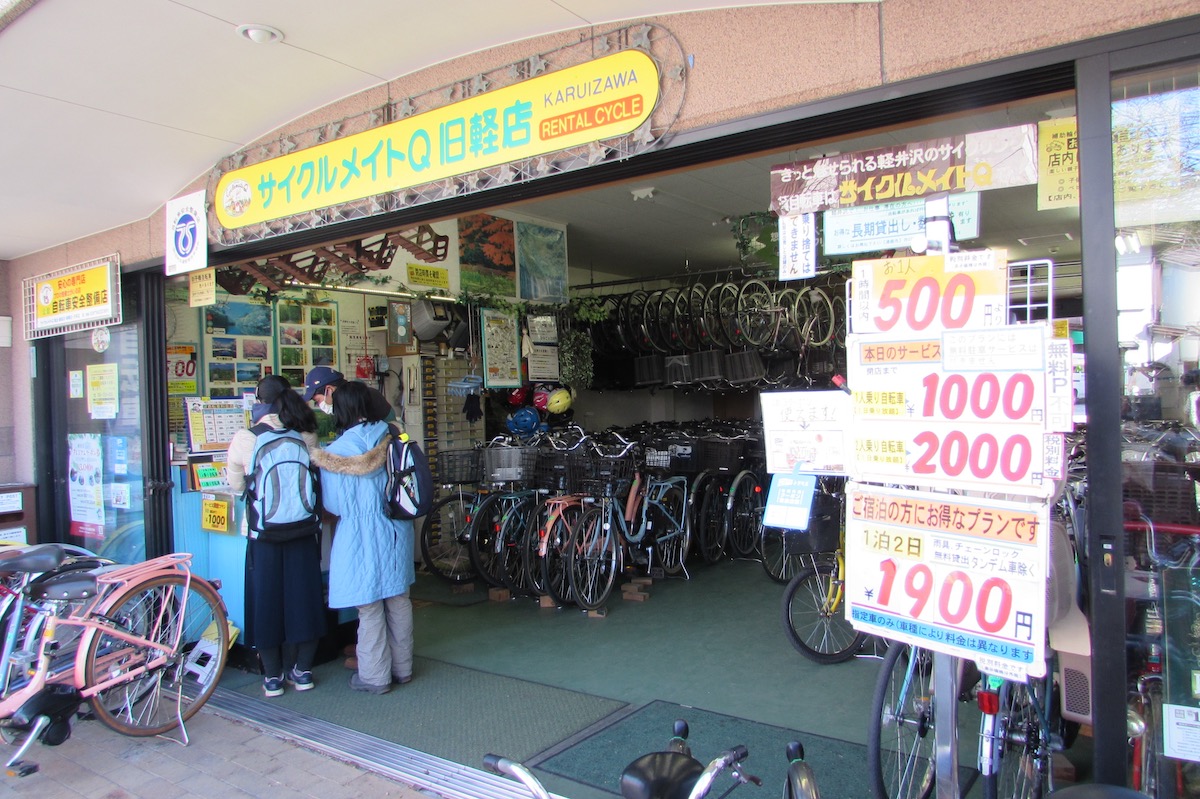
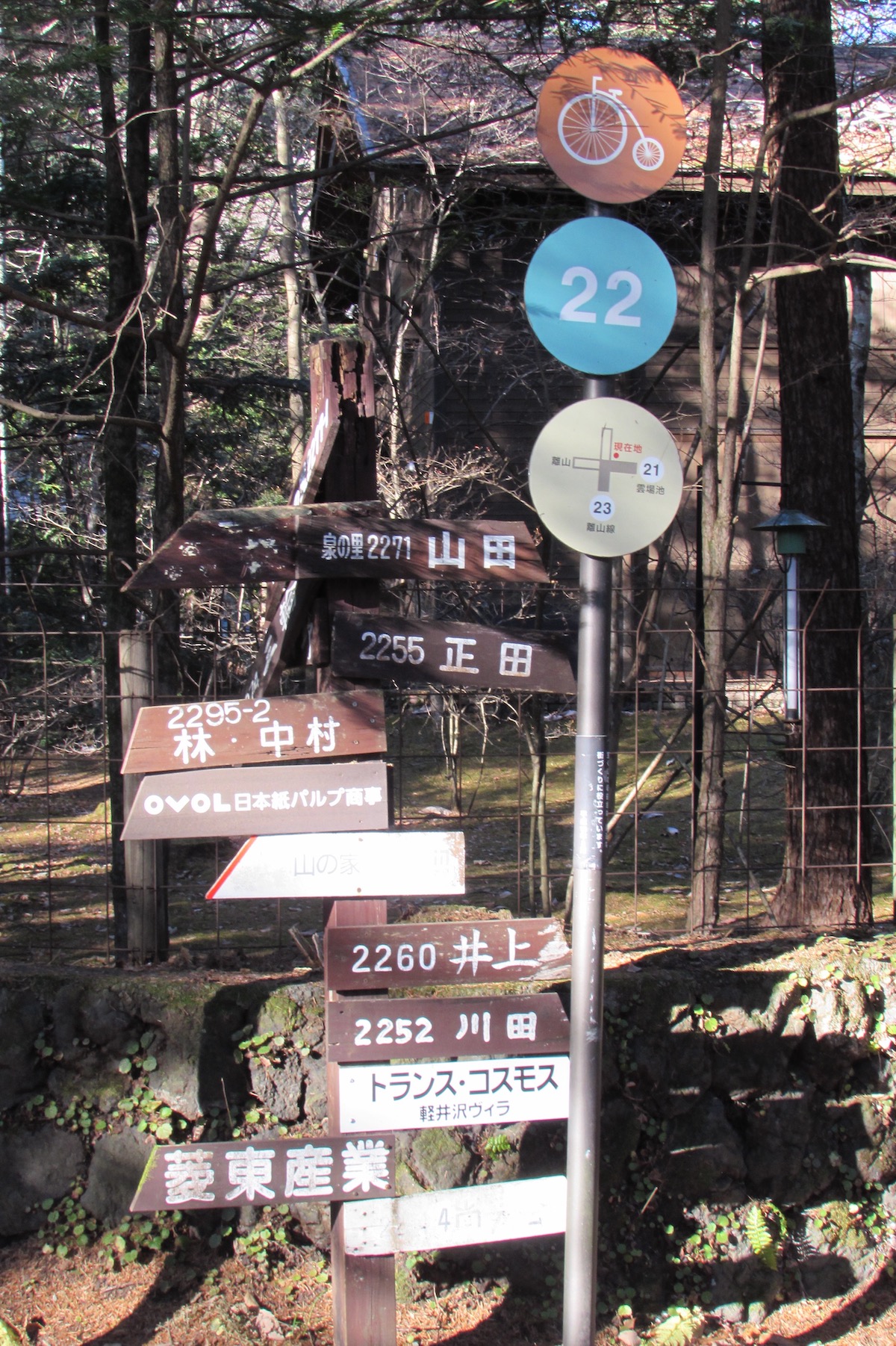
Cycling turned out to be an efficient and fun way to explore Kyu-Karuizawa, and was one of my best memories from our trip. We passed small churches, shops, and neighborhoods, ending at Kumobaike Pond 雲場池. The name literally means Cloud Place Pond because of the thick fog that often shrouds it, but we caught it on a clear day, with the sun glinting like fireworks on the water.
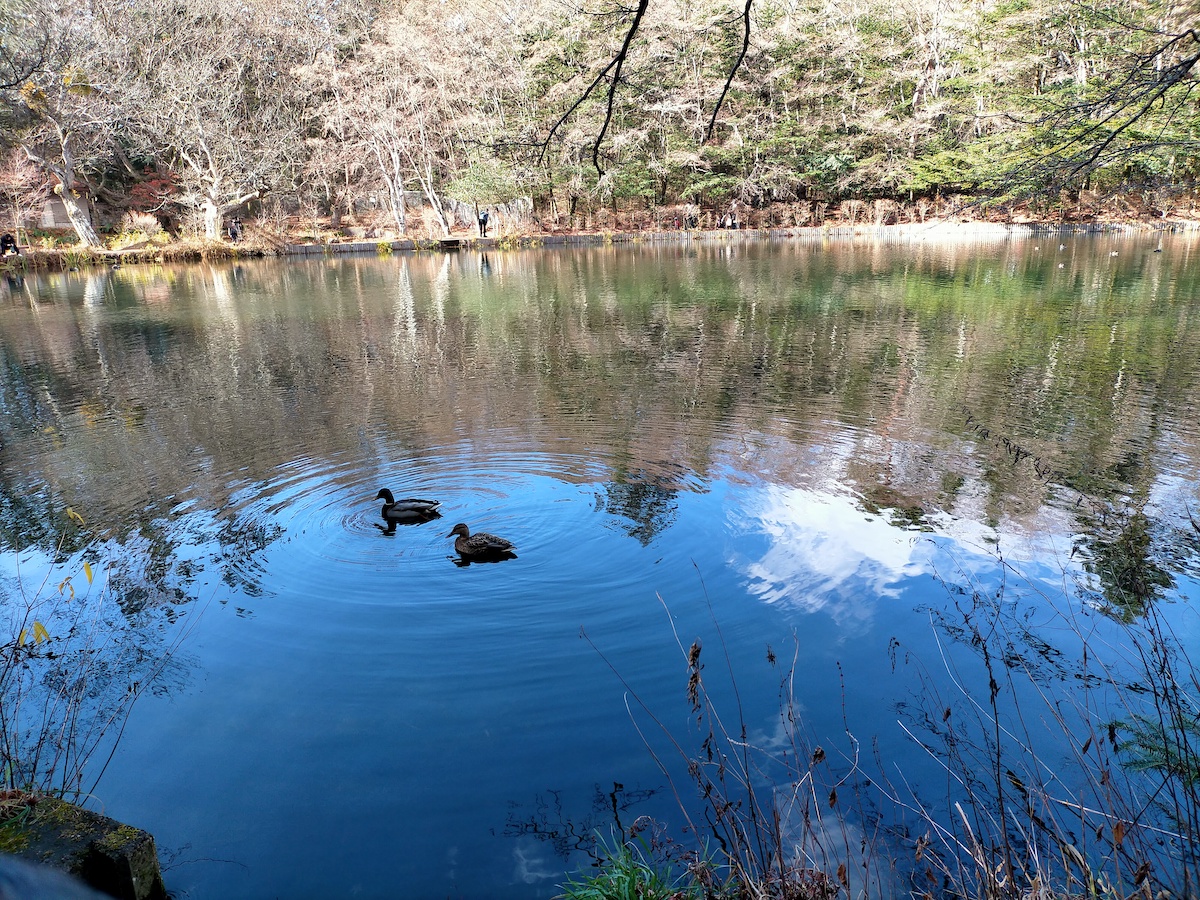
Next on our schedule was lunch at Sasa. From the number of people posing in front of the restaurant, we knew we weren’t the only Terrace House fans there. The line moved quickly, and we were soon seated next to the counter, where we ordered two plain sobas and one soba and tempura set with local “nozawana” pickles. Sato-san was everywhere at once, greeting and serving customers, and cooking in the kitchen. Dressed in his matcha green uniform and with his brilliant smile, he truly looked like the “master” of the place, but he kindly made time to stop by our table during our meal and check us out at the end.
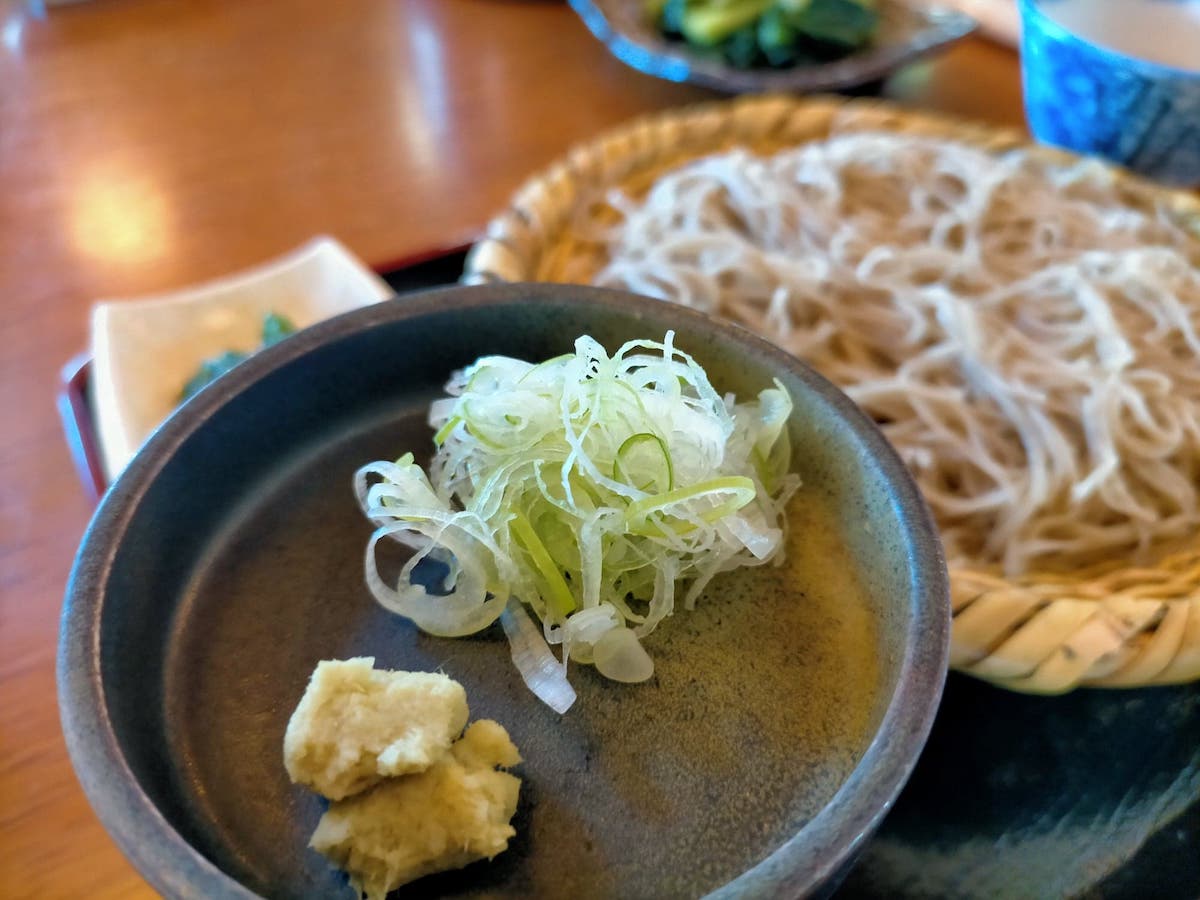
Insider Tip: Don’t be shy about asking for a photo—grab your chance while you can!
Allergy Warning: 100% buckwheat noodles are available, but be aware they are prepared on the same surface as wheat noodles.
After lunch, we continued the Terrace House hunt. A forty-minute cycle took us to the other side of the station and past our hostel to Kazakoshi Park 風越園. This sports and fitness complex is where the 1998 Olympic curling games took place. We skipped the Olympic arena and headed straight to SCAP fitness gym where Tsubasa gave Ami a training session in “Opening Doors” Part One, Episode 6. Unfortunately, we missed meeting Tsubasa by a few hours.
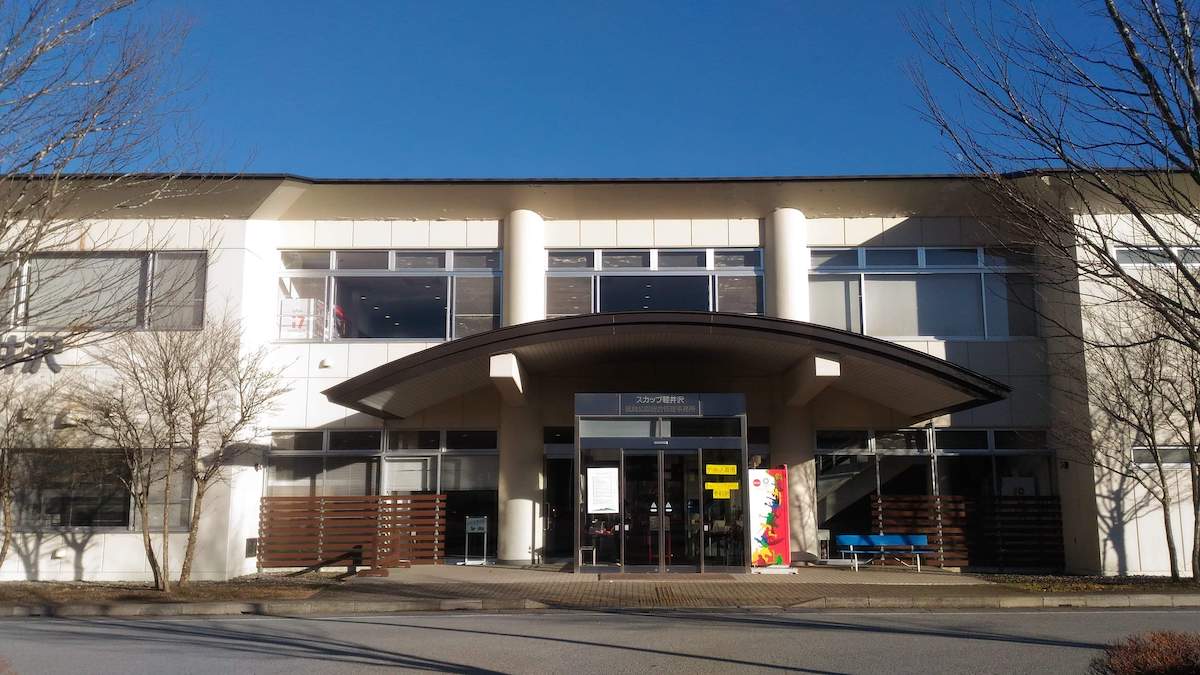
Insider Tip: If you’re looking for something active to do but aren’t quite up to skiing, Kazakoshi Park has an outdoor skating rink during the winter months (mid-November to mid-February).
It was mid-afternoon by the time we got back to town and returned our bicycles to the friendly CycleMateQ staff. We did a little more shopping on Ginza Dori–a pair of pointy chopsticks and a beautiful tea cup were bought secretly as Christmas presents, and a final stop for ice cream topped off our day nicely. With a feeling that we had only just begun to discover Karuizawa, we caught one last taxi to our hostel to pick up our bags and head back to the station, and from there, back to Tokyo and warmer weather.
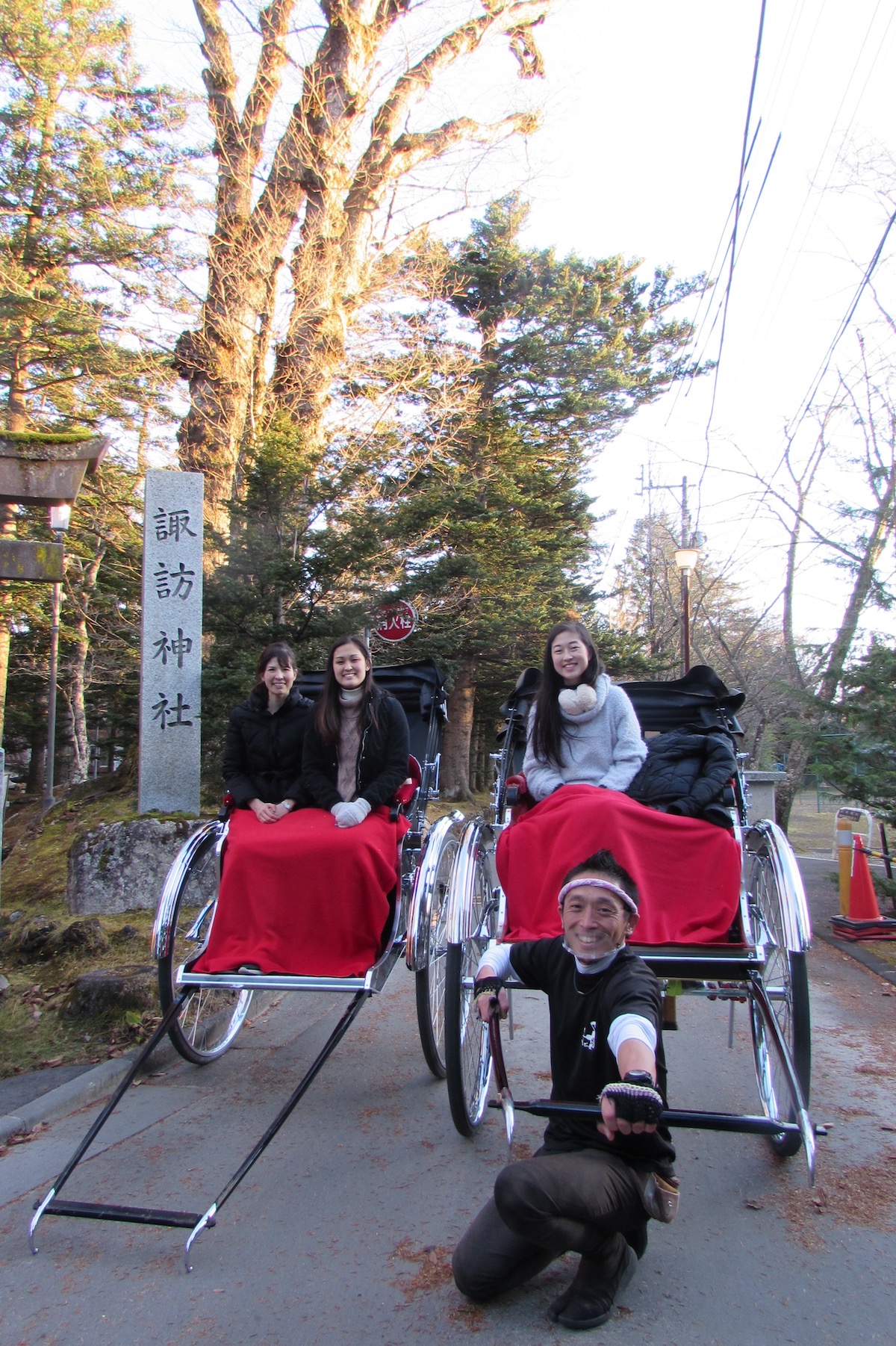
What We Learned
Travel does not always go as planned. We hope that by sharing both the ups and downs of our adventures, you will be able to experience the trip of your dreams. Happy travels!
Travel Tips:
- 1: Double-check the koyo (or sakura) forecast
- 2: Be sure to pack warm clothes if you are visiting in mid-November onwards
- 3: Bring a water bottle and snacks
- 4: Research your bus stops and timetables before going
- 5: If you need help, head straight to the one on Ginza Dori Tourist Information Center
- 6: Don’t forget to laugh
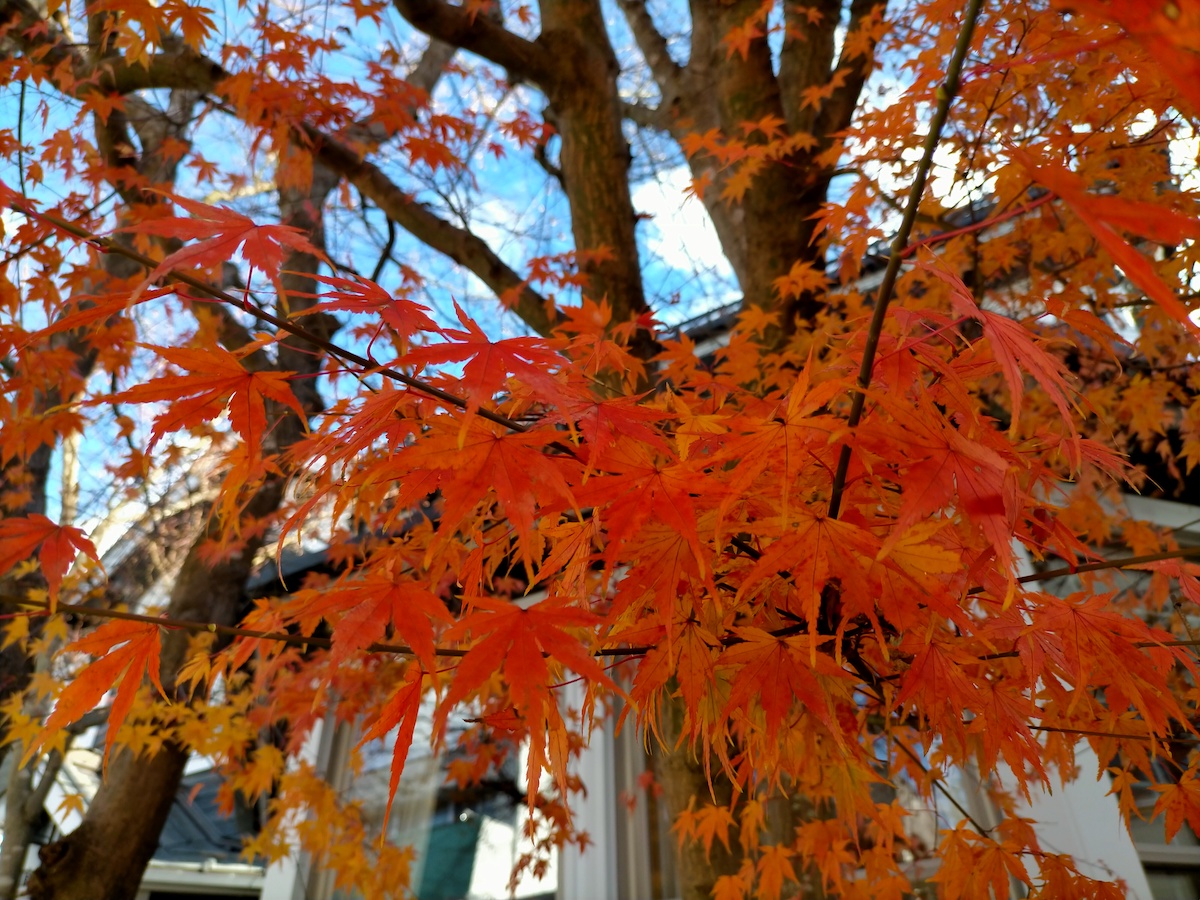
Related Articles
Warning: Undefined array key "sfsi_threadsIcon_order" in /home/veremosglobal/tokyoroomfinder.com/public_html/blog/wp-content/plugins/ultimate-social-media-icons/libs/controllers/sfsi_frontpopUp.php on line 165
Warning: Undefined array key "sfsi_blueskyIcon_order" in /home/veremosglobal/tokyoroomfinder.com/public_html/blog/wp-content/plugins/ultimate-social-media-icons/libs/controllers/sfsi_frontpopUp.php on line 170
Warning: Undefined array key "sfsi_bluesky_display" in /home/veremosglobal/tokyoroomfinder.com/public_html/blog/wp-content/plugins/ultimate-social-media-icons/libs/controllers/sfsi_frontpopUp.php on line 266

